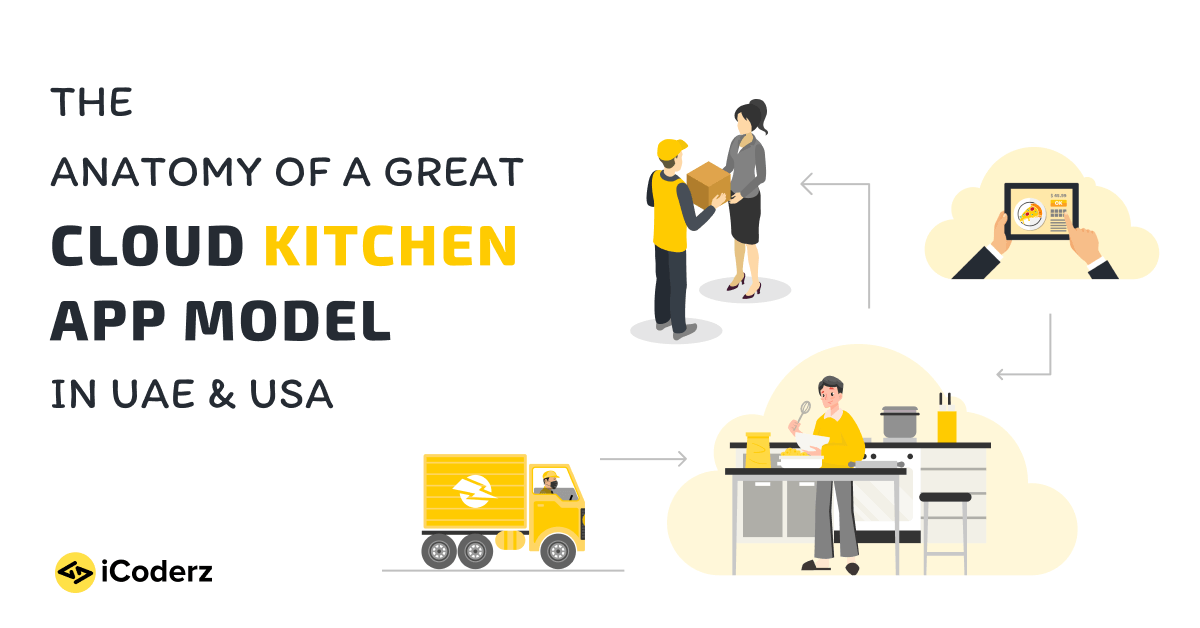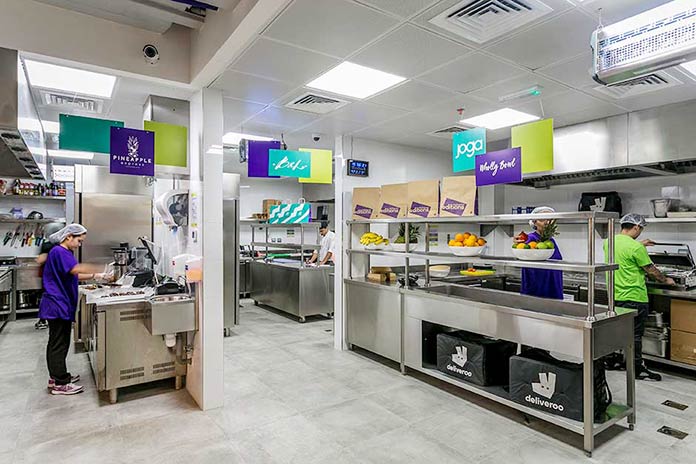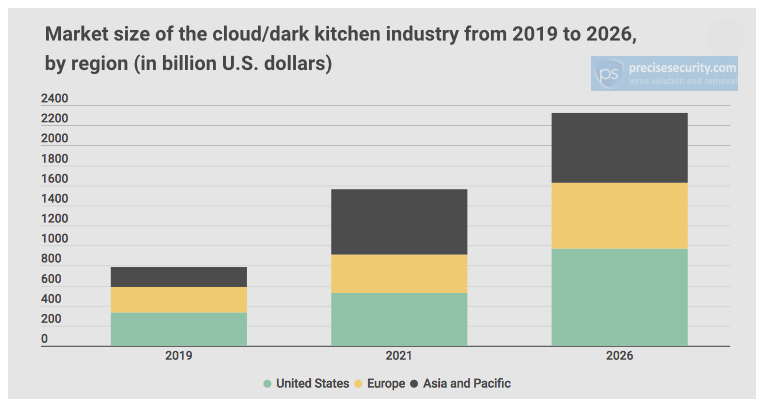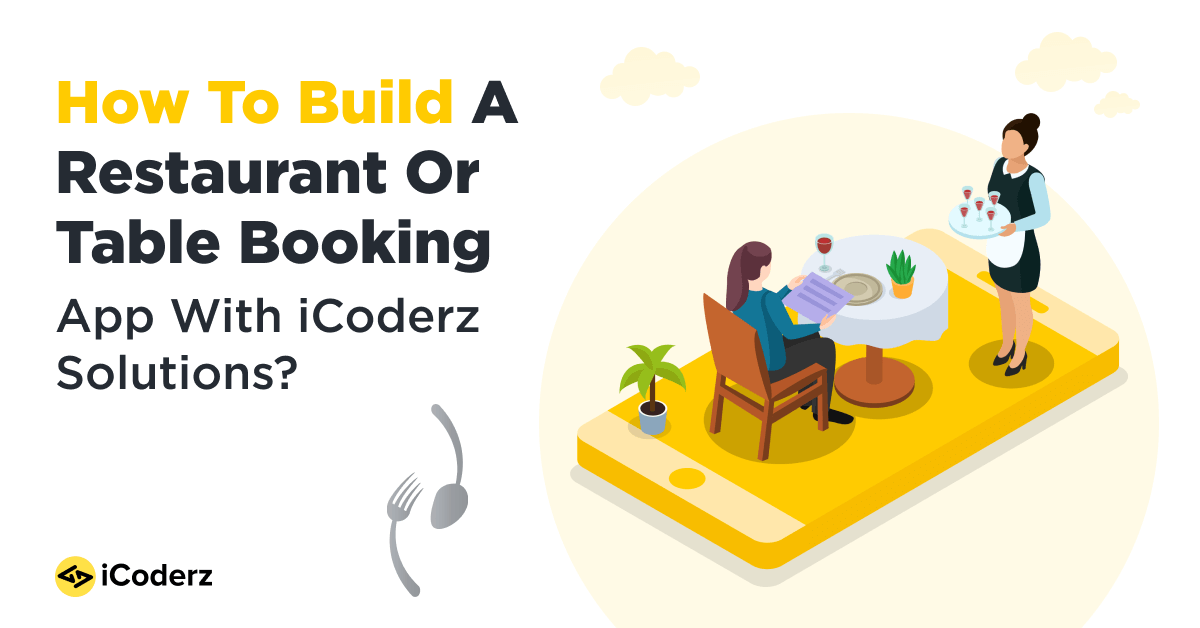Table of Contents
Cloud kitchen, aka ghost kitchen, is a takeaway and food delivery business model that many of us are interested in investing in. The food industry is enormous, and at the same time, it guarantees spectacular performance for the coming years. From the giant food industry’s different business models, the cloud kitchen app development investment sounds profitable because ghost kitchen is a type of business model where good returns are expected from a low investment portfolio. Here the capital required is less than running a restaurant but at the same time, the profits are amazingly sound. Let us have detailed anatomy of ghost kitchen models with today’s exclusive blog post.
How did Cloud Kitchen Model emerge?
Every beautiful invention carries a legacy or a history for its existence. When discussing the CK (Cloud-Kitchen) business model, we must refer to pop culture history. Yes, during the pop culture times in Silicon Valley, many food business owners rented a small, shared place for cooking food for their customers. Considering the cost of renting an entire restaurant as high and impossible for many small-scale business owners, the shared or rented small spaces became prominent for cooking food recipes. These shared places are modernized now, and we refer to them as the cloud or ghost kitchens in 2020.
Cloud Kitchen Global Market Size 2019-2027
The many advantages of the ghost kitchen concept have already booked the said industry segment’s market predictions. The global CK market size in the year 2019 was valued at 43.1 billion USD and is expected to grow with a 12% CAGR for 2021-2027. It clearly states that the cloud kitchen startups and industries will cross the market size of 71.4 billion USD by the end of 2027.
Desirable business owners and cloud kitchen startups can expect their business to grow in the coming few years at an incredible pace. Also, investing in the food delivery market is considered wise as it is an emergency proof business relating to the current pandemic example.
The undeniable state-of-the-art technology
In simple terms, let us name it as the makeover of the CK industry. The very first thing that has helped the concept to outburst so beautifully and swiftly is the technology. Thanks to technology that has helped the entire food and delivery industry convert into a one-click sector where customers and foodies can place their favorite dish in whatsoever quantities with a single food delivery app click.
The cloud kitchen app development for a food business is trending as #1 in UAE and USA. Considering the pandemic situation, the food delivery industry is growing more massive than the dine-in industries worldwide. Business owners are thinking smartly by putting their investments and efforts into the cloud kitchen business model rather than the dine-in restaurant model.
Cloud Kitchen in UAE
UAE has welcomed many ghost-kitchen concepts in the last three to four years. The famous food delivery service in the UK, Deliveroo invested in remote and shared space kitchen concepts in UAE in 2017. It helped a few brands to utilize their shared kitchen space for delivering food across different locations. The famous UAE food brands, including Burger and Lobster and Joga, collaborated with Deliveroo for shared kitchen concepts, and it turned out great. Without investing in the brick-and-mortar restaurant concept, the brands could deliver their famous food recipes in different locations of the UAE. This was the smart move bringing in smart revenue for the brands.
Here is a glimpse of the shared kitchen concept launched by Deliveroo in 2017
KPMG Business Report
KPMG is one of the most trusted advisory services and global networks in the UAE. One of the studies published by KPMG in the year 2019 stated that UAE is considering moving towards the cloud kitchen model’s growth. One of the other reasons for boosting the growth of cloud kitchens in Dubai and UAE is introducing the value-added tax. Food business owners are trying to shift their interest towards the delivery model, which is possible with cloud kitchen app development for the food business.
Cloud Kitchen in the USA
The USA shall always be the leading player in the dark kitchen market considering Americans’ growing interest in ordering food delivery. Some USA restaurants have permanently switched their operations from brick-and-mortar restaurant concept to cloud kitchen business model during the pandemic. For these restaurant owners, investing in the cloud kitchen app development is more like an asset than an expense.
Here is a market size statistic of the ghost kitchen industry for different regions, including the USA.
Source: Asian Hotel and Catering Times
USA: The rising food delivery orders during the pandemic
The Covid-19 pandemic situation was at boom during March across the countries like the USA, and the UK. Here, the restaurant owners experienced a considerable drop in the incoming traffic. The dine-in traffic was dropped by 20-25% during March, and it continued to surge as the coronavirus spread was enhanced with time.
It was the right time for many restaurant owners to launch their food delivery service. Amidst the pandemic, many smart business owners invested in the cloud kitchen business model to earn the most out of the food delivery business. And surprisingly, the food delivery market soared sales by 65-75% in the USA and other countries. Food delivery is a significant segment for the food industry entrepreneurs as they are sure to hit their break-even point target in a couple of months.
The above example is of 2020, the current year, but in countries like America, the cloud kitchen app concept is quite old and accepted. The famous food delivery players, Grubhub and Seamless, had already set up their shared dark kitchen space in 2015. Both the brands had made good revenue by earning the advantages of the cloud kitchen concept. The same concept applies to the cloud kitchen startups or owners who wish to get their food delivery service launched in the USA or anywhere globally.
How to make the most with your next Cloud Kitchen Model?
We have already discussed how the cloud kitchen in UAE and USA are trendy in 2020 and is expected to soar in the coming years. If you are interested in launching your cloud kitchen business model anywhere in the world, you must take care of the following things.
1) Choosing the ‘best’ cloud-kitchen location
The first thing that cloud kitchen startup owners must do is set up the kitchen either by renting a place or a shared space. The kitchen must be set up in the area that falls in the centre of your targeted delivery locations. It is highly prominent to cover maximum delivery locations for enhancing your food delivery business’s reach, hence the location of the kitchen setup serves highly crucial in the success of your dark kitchen model. Unlike restaurants, you do not need to select a prime location as customers won’t be visiting the place for dine-in experience.
2) Cloud kitchen app development for food business
After choosing the right location and setting up your ghost kitchen, the very second thing to do is consult an app development company for the cloud kitchen app development process. There should be a proper blueprint in your mind to serve your customers for which designing and developing a food delivery application for your cloud kitchen in USA, India or UAE is highly crucial.
So, you shall require three apps to successfully run your cloud kitchen business model anywhere in the world.
- Cloud kitchen app
- Customer app
- Driver app
Cloud Kitchen App serves similarly like the restaurant owner app. The cloud kitchen app owner can add-edit-delete the menu and offers reading to which the customers can place the order on their customer app. The driver application features, and the customer application mostly remain the same as the food delivery application. The primary thing that is makeover with the cloud kitchen app is that there is no restaurant and hence, no restaurant table booking service is available on the app. It is pure food delivery model where customers can expect the food delivery after placing the order on the concerned cloud kitchen app.
3) Hiring the best chefs for your food delivery brand
Good taste and quality food are everything that a customer expects while ordering food online or while dining at any restaurant. To help your cloud kitchen in Dubai or anywhere in the world stand out of the competition, it is important to hire the best cooking staff, including the different cuisine chefs and helpers.
If your cloud kitchen in USA or India or UAE serves multi-cuisine food, you need to hire different chefs to deliver the best quality food. For example, best north Indian chef for north Indian cuisine, best pantry chef for pantry menu, Chinese expert chef for Chinese cuisine, regional chef for regional specialities added on the menu list, etc. Hence, hiring the right staff for your cooking quality is exceptionally essential for your cloud kitchen business’s success.
4) Setting up a delivery channel
A delivery channel is required for maintaining the delivery schedule and running it correctly as expected. So, for the same, if you are not having an in-house staff-you need to partner with any delivery model in your city/country. Setting up the delivery channel as per the locations targeted is exceptionally crucial.
When you have got the best cooking staff and right cloud kitchen app development for a food business, the chances of your startup’s success are relatively high but at the same time, if your delivery model is flawed- it can be vice versa. So, start hiring the right delivery guys for running your cloud kitchen model deliveries on scheduled time.
Having an admin panel or a cloud kitchen backend management software also aids your business set the right delivery channel. To inquire about cloud kitchen software development, talk to our business head at iCoderz Solutions.
5) Targeting locations for delivery
When you have the right delivery channel for initiating successful food delivery, it is important to have targeted locations on delivery. The targeted areas must be set so that your delivery people can reach the location within 5-10 minutes after the food is prepared and ready to deliver. Too long distances can affect the entire delivery setup and upset the customers when they do not eat warm or hot food.
At the same time, the targeted locations need to be discussed with your cloud kitchen app development company for helping them to embed the correct locations for delivery. Hence, if any customer orders from the non-delivery location, the app can reject the delivery before the order is accepted.
6) Shared space with other brands
One more thing that cloud kitchen startups can expect with the setup is reducing the overhead costs by sharing the kitchen space with other brands, just like Grubhub and Seamless shared kitchen space for cloud kitchen in USA. The concept is to run multiple brands from a single kitchen space, reducing additional costs and sharing the maintenance expenses.
Other Advantages of Cloud Kitchen business model:
- Less investment compared to a brick-and-mortar restaurant
- Reduced overhead costs
- No maintenance costs
- Less human resource requirement
- Digitally sound business
- Emergency proof business operations
- Enhanced efficiency
- Shared space with multiple brands
- Real-time customer data via cloud-kitchen management software
The Bottomline of Cloud Kitchen Business Model Anatomy
Dark kitchen, aka cloud and ghost kitchen concept, holds a bright future as it serves the greater need for food delivery requirements. As we have studied with the blog, many factors have positively influenced cloud kitchen models’ growth in different countries, including the USA, UAE, and India. With minimum capital and maximum exposure, the dark kitchen startup owners can expect a great future with the said business segment.
Cloud Kitchen Software Development:
We at iCoderz Solutions can help your business grow with cloud kitchen app development service. If you wish to have a demo of the application, or know more about the features, talk to our business team. We are just a click away. Also, we have our ready-made app solutions ready for single and multi-vendor food delivery apps for which clients can find online demos available on YouTube.







